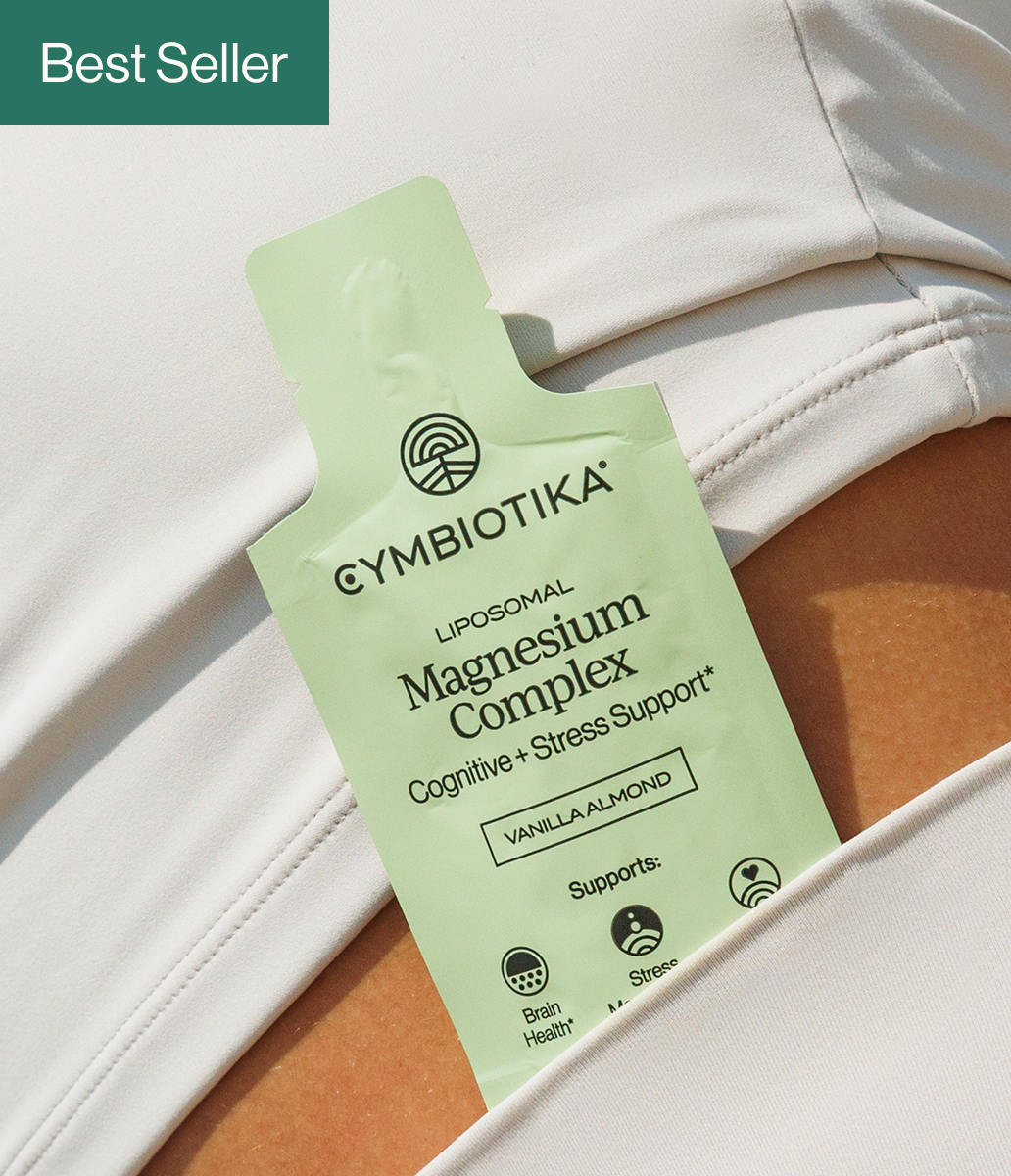Table of Contents
- Introduction
- The Biochemical Process of Vitamin D Synthesis
- Factors Influencing Vitamin D Production
- The Significance of Vitamin D for Overall Health
- Tips for Maintaining Adequate Vitamin D Levels
- Conclusion
- FAQ Section
Have you ever wondered how the sun influences your health beyond just giving you a tan? Vitamin D, often called the "sunshine vitamin," plays a crucial role in our well-being, and its synthesis begins right in our skin when exposed to sunlight. The process of how our skin produces vitamin D is as fascinating as it is essential.
At Cymbiotika, we believe that wellness starts with trust and transparency. We’re committed to empowering our community with science-backed insights about health and nutrition, including the importance of vitamin D. In this blog post, we will explore the intricate process of vitamin D production in the skin, its significance for overall health, and how we can ensure we’re getting enough of this vital nutrient.
Introduction
A surprising statistic reveals that nearly 1 billion people worldwide are believed to have insufficient levels of vitamin D, which can have far-reaching consequences for health. This vitamin is not just a nutrient; it's instrumental in regulating calcium, promoting bone health, and supporting immune function. Despite its importance, many of us are still unaware of how our skin synthesizes vitamin D and what factors influence this process.
The importance of vitamin D has gained attention in recent years, especially as research continues to unveil its potential roles in preventing diseases and maintaining general health. Understanding how vitamin D is produced in the skin can help us appreciate its importance and take proactive steps to ensure we’re getting enough of it.
In this comprehensive exploration, we will discuss the following topics:
- The biochemical process of vitamin D synthesis in the skin
- Factors that influence vitamin D production
- The significance of vitamin D for overall health
- Tips for maintaining adequate vitamin D levels, including dietary sources and supplementation
By the end of this article, we hope to empower you with knowledge about vitamin D and how we can support our bodies' needs through informed choices.
The Biochemical Process of Vitamin D Synthesis
Vitamin D production begins when ultraviolet B (UVB) rays from the sun penetrate the skin. The process can be broken down into several key steps:
1. Sunlight Exposure and Skin Interaction
When UVB rays hit the skin, they convert a cholesterol derivative in the skin called 7-dehydrocholesterol into previtamin D3. This is the first step in the synthesis of vitamin D. The skin's keratinocytes (skin cells) contain the necessary enzymes to facilitate this conversion.
2. Conversion to Vitamin D3
After the formation of previtamin D3, it undergoes a heat-dependent process that transforms it into vitamin D3 (cholecalciferol). This vitamin D3 is still not in its active form and needs further processing.
3. Hydroxylation in the Liver and Kidneys
Vitamin D3 travels through the bloodstream to the liver, where it is converted into 25-hydroxyvitamin D (calcidiol). This is the form of vitamin D that is typically measured in blood tests to assess a person's vitamin D status. The next step occurs in the kidneys, where calcidiol is further converted into the biologically active form of vitamin D, 1,25-dihydroxyvitamin D (calcitriol).
4. Role of Vitamin D in the Body
Calcitriol plays a critical role in calcium and phosphorus absorption in the intestines, which is vital for maintaining bone health. It also has effects on the immune system and may influence cell growth and differentiation.
Summary of the Synthesis Process
- UVB rays convert 7-dehydrocholesterol in the skin to previtamin D3.
- Previtamin D3 is converted to vitamin D3.
- Vitamin D3 is hydroxylated in the liver to form calcidiol.
- Calcidiol is further converted to calcitriol in the kidneys, the active form of vitamin D.
Understanding this multi-step process highlights the importance of sunlight for our health and the necessity of maintaining safe sun exposure practices.
Factors Influencing Vitamin D Production
Numerous factors can affect how efficiently our skin produces vitamin D. Understanding these can help us make informed decisions about sun exposure and supplementation.
1. Geographic Location
Our latitude significantly impacts UVB exposure. People living closer to the equator receive more direct sunlight year-round, while those in northern latitudes may experience reduced UVB intensity, especially in winter months.
2. Skin Pigmentation
Melanin, the pigment that gives skin its color, absorbs UVB rays. Therefore, individuals with darker skin may require more sun exposure to produce the same amount of vitamin D as those with lighter skin tones.
3. Age
As we age, our skin becomes less efficient at synthesizing vitamin D. This is particularly important for older adults, who may need to consider dietary sources or supplementation to maintain adequate levels.
4. Sunscreen Use
While sunscreen is essential for protecting against skin cancer, it can also reduce the skin’s ability to produce vitamin D. High-SPF sunscreens can filter out UVB rays, making it essential to balance sun protection with safe sun exposure.
5. Time of Day and Season
The sun’s position affects UVB intensity; midday sun (between 10 a.m. and 2 p.m.) is the most effective for vitamin D synthesis. Additionally, during winter months, especially in higher latitudes, the angle of the sun can significantly reduce UVB exposure.
Summary of Influencing Factors
- Geographic location and latitude
- Skin pigmentation and melanin levels
- Age and skin efficiency
- Sunscreen usage
- Time of day and seasonal variations
By understanding these factors, we can better manage our vitamin D levels through lifestyle adjustments.
The Significance of Vitamin D for Overall Health
Vitamin D is not just a supporting player in our body; it has far-reaching implications for various aspects of health:
1. Bone Health
Vitamin D is critical for calcium absorption, which is essential for maintaining strong bones. Insufficient vitamin D can lead to bone density loss, increasing the risk of fractures and conditions like osteoporosis.
2. Immune Function
Emerging research suggests that vitamin D may play a role in modulating the immune system. Adequate levels of vitamin D may help enhance the body’s defense against infections and may even influence the severity of autoimmune disorders.
3. Mood Regulation
Some studies have indicated a connection between vitamin D levels and mood. Low levels have been linked to conditions such as depression and anxiety, highlighting the importance of this vitamin for mental well-being.
4. Chronic Disease Prevention
Research has suggested that adequate vitamin D levels may help lower the risk of certain chronic diseases, including cardiovascular disease and some types of cancers. While more research is needed, maintaining healthy vitamin D levels may contribute to overall health.
Summary of Health Implications
- Supports bone health and calcium absorption
- Modulates immune function
- May influence mood and mental health
- Potentially lowers the risk of chronic diseases
Given these benefits, ensuring adequate vitamin D levels is crucial for maintaining overall health and preventing various health issues.
Tips for Maintaining Adequate Vitamin D Levels
Now that we understand the importance of vitamin D and how it is produced, let’s explore practical tips for maintaining sufficient levels:
1. Safe Sun Exposure
Aim for short periods of sun exposure, about 10 to 30 minutes, several times a week, depending on your skin type and geographic location. Expose areas of your skin, such as arms and legs, while being mindful of sun protection afterward.
2. Dietary Sources
Incorporate vitamin D-rich foods into your diet. Fatty fish like salmon, mackerel, and sardines are excellent sources. Other foods, such as fortified milk, orange juice, and egg yolks, also contribute to your vitamin D intake.
3. Supplements
For those who struggle to get enough vitamin D from sunlight and food, considering a high-quality vitamin D supplement can be beneficial. At Cymbiotika, our focus on transparency and quality ensures you receive science-backed supplements that support your wellness journey.
4. Regular Testing
If you’re concerned about your vitamin D levels, consider discussing testing with your healthcare provider. Regular monitoring can help you determine if you need to adjust your sun exposure, diet, or supplementation.
Summary of Tips
- Practice safe sun exposure
- Include dietary sources of vitamin D
- Consider high-quality supplements
- Regularly check vitamin D levels
By taking these steps, we can proactively manage our vitamin D levels and support our health.
Conclusion
Understanding how the skin produces vitamin D is a vital aspect of our overall wellness. By grasping the synthesis process, recognizing the factors that influence it, and appreciating the importance of vitamin D, we can take actionable steps toward maintaining our health.
At Cymbiotika, we are committed to providing supplements with no hidden ingredients and transparent labels to empower our community to take control of their health. If you’re unsure about your vitamin D needs, we invite you to take our AI quiz to determine the best supplement for you.
Additionally, consider exploring our Skin Health Supplements collection, designed to support your skin’s vitality and overall health.
Together, let’s embrace the sun’s benefits while prioritizing our health with informed decisions about vitamin D and wellness.
FAQ Section
Q1: How much sun exposure do I need to produce enough vitamin D?
A1: Generally, 10 to 30 minutes of sun exposure several times a week can be sufficient, depending on factors like skin type, geographic location, and time of year.
Q2: Can I get enough vitamin D from dietary sources alone?
A2: While dietary sources like fatty fish and fortified foods can contribute to vitamin D intake, many people may still require supplementation, especially if they have limited sun exposure.
Q3: Is it safe to take vitamin D supplements?
A3: Yes, but it's essential to consult with a healthcare provider to determine the appropriate dosage, especially if you have specific health concerns or conditions.
Q4: What are the signs of vitamin D deficiency?
A4: Common signs include fatigue, bone pain, muscle weakness, and mood changes. If you suspect a deficiency, consider discussing testing with your healthcare provider.
Q5: How do I choose a quality vitamin D supplement?
A5: Look for supplements that are third-party tested for quality, transparency in labeling, and contain the appropriate dosage for your needs. At Cymbiotika, we prioritize these standards in our formulations.
By understanding and actively managing our vitamin D levels, we can enhance our well-being and maintain a healthy lifestyle.
*These statements have not been evaluated by the Food and Drug Administration. This product is not intended to diagnose, treat, cure, or prevent any disease.





















